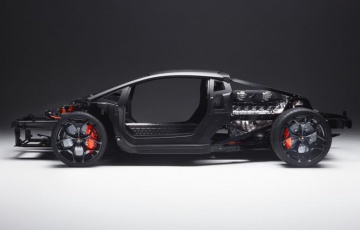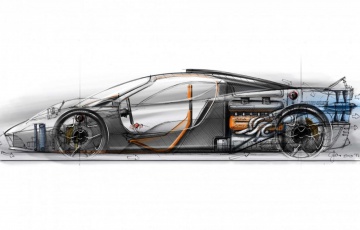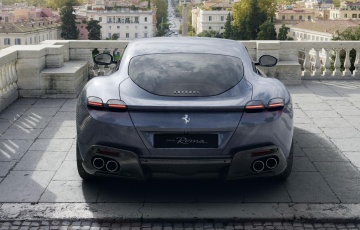Restogods: Eagle Low Drag GT vs GTO Engineering 250 SWB
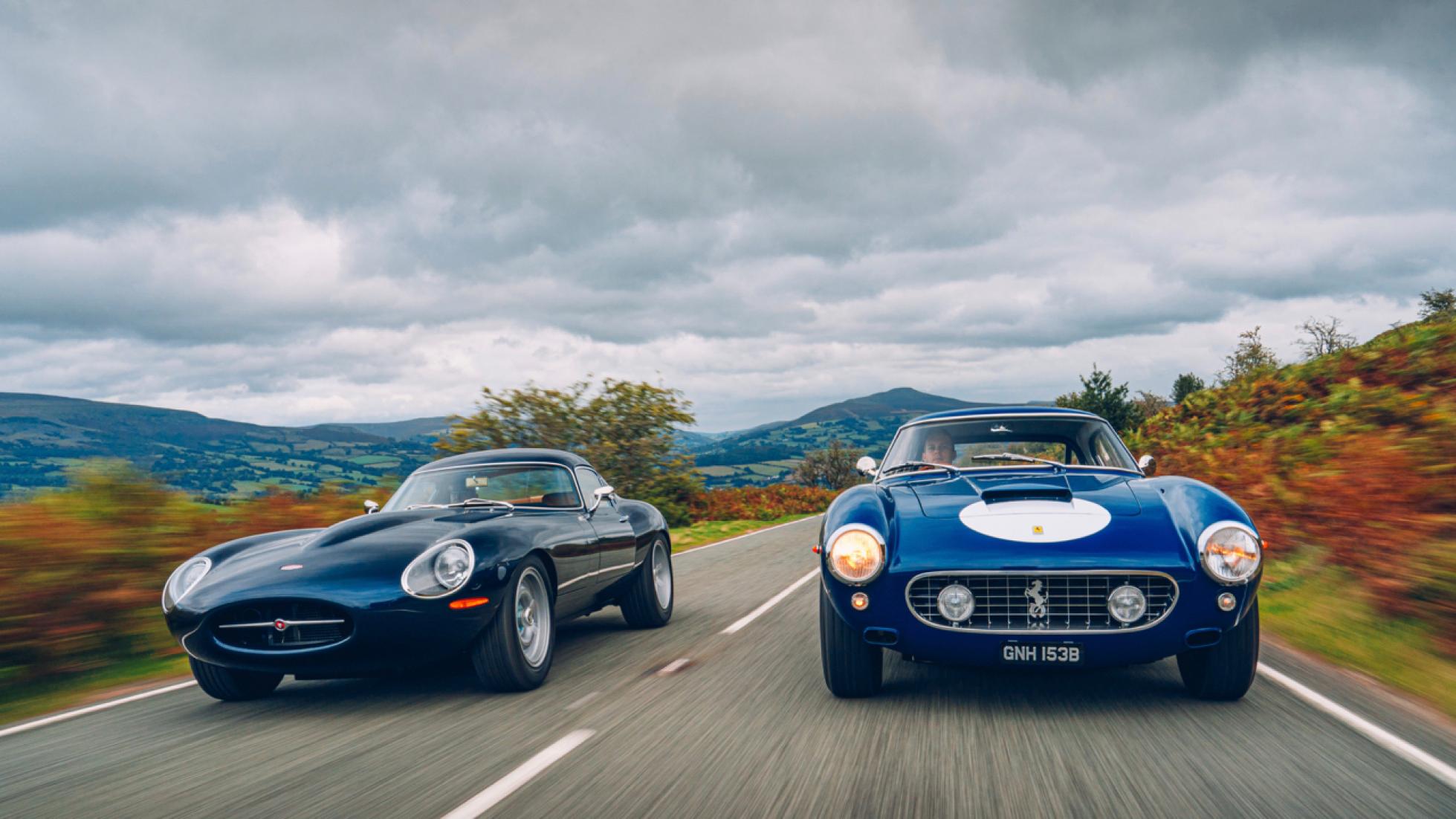
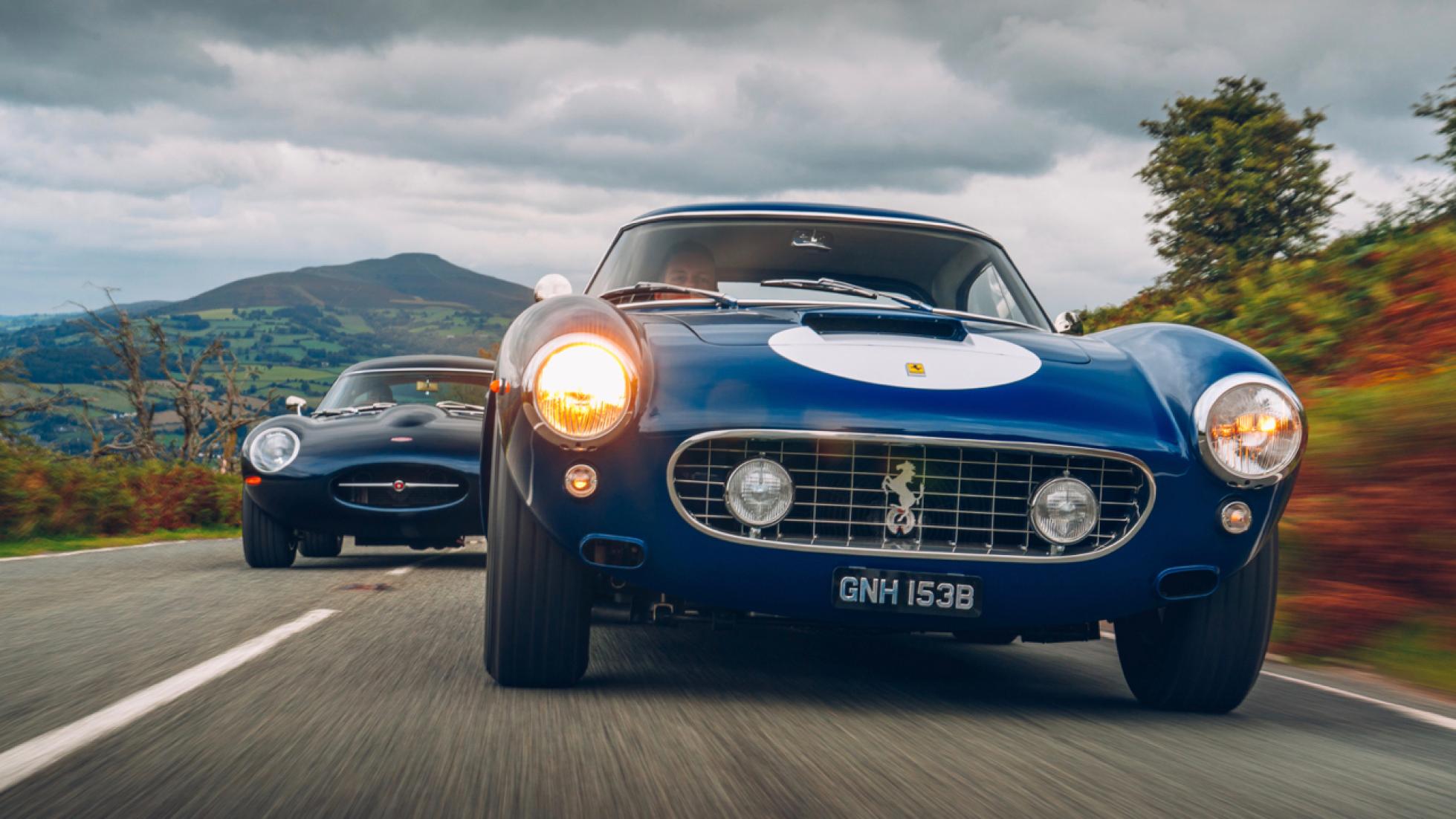
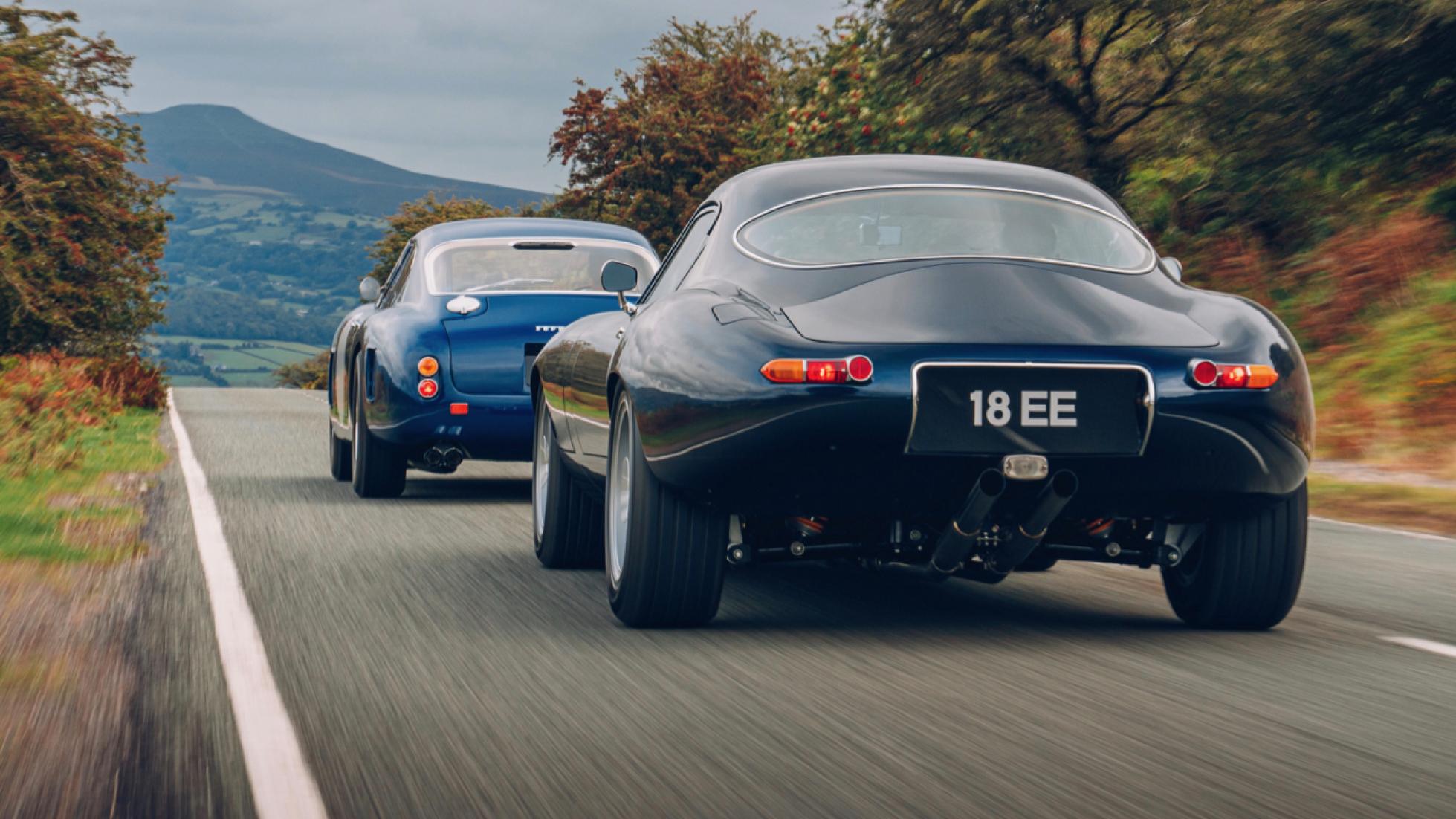
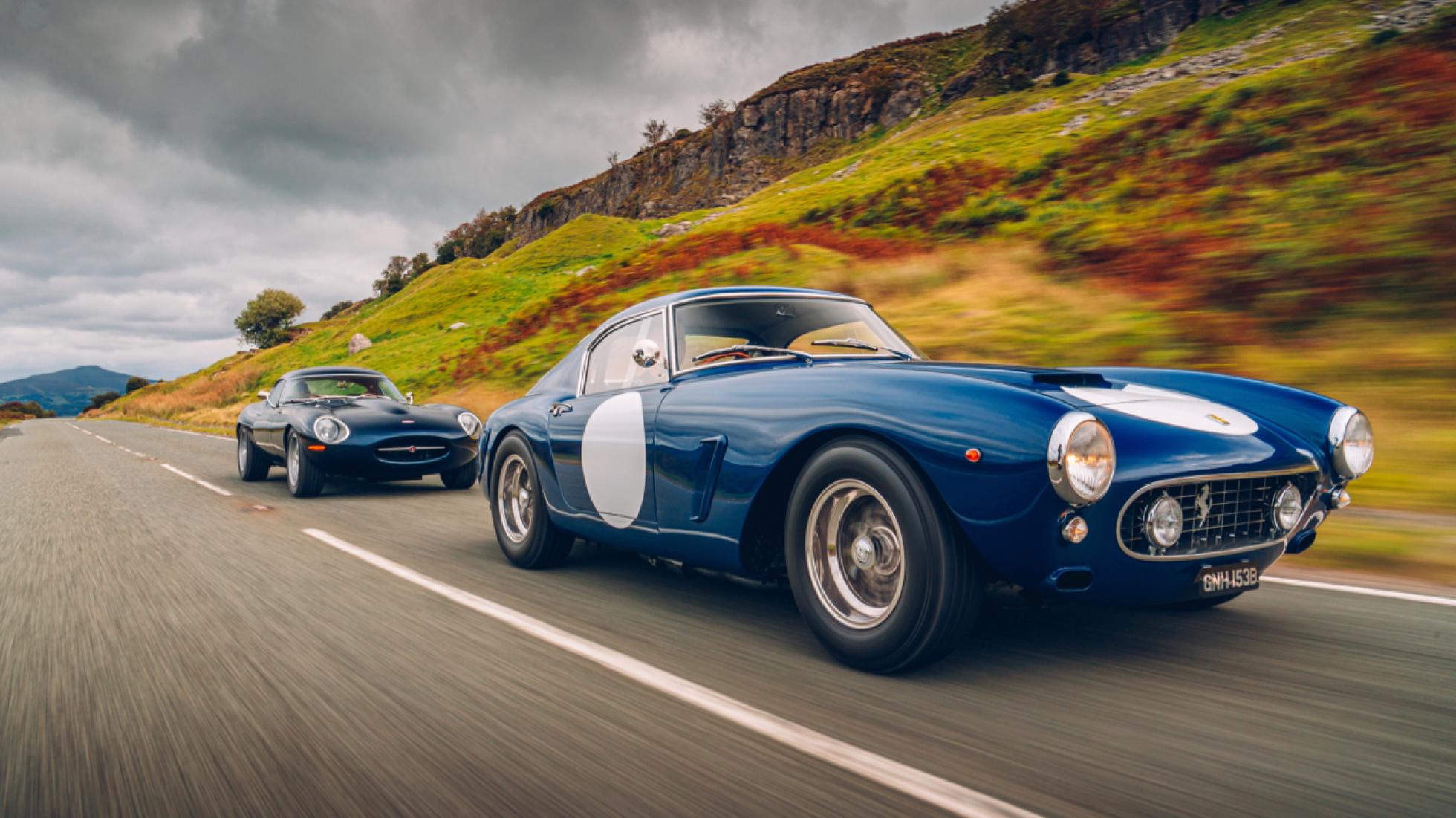
Restogods: Eagle Low Drag GT vs GTO Engineering 250 SWB
Name me a beautiful racing car. No, a modern one. Because I bet that whatever first popped into your head wasn’t a product of this century. But look at these two. Look again. And again. In fact why bother reading these words at all? I happily stopped typing them again and again just to go back and pore over the pictures taken on one of the most ridiculous days of my entire career.
That day. Boy, oh boy. We didn't just have two of these stunning restored cars along, but five. Five! None of us knew what to do with ourselves. We all ran around like giddy toddlers in a softplay, unable to process what was going on, utterly overwhelmed by the sights and sounds. Every time one moved or started, our base instincts kicked in, we all clutched ourselves and went ‘Cor!’. It was simultaneously life-affirming and pathetic.
Best get back to the subject of beauty: I’d driven to South Wales in the Alfaholics GTA-R, and by chance found myself following the Eagle Low Drag GT for the last few miles. It is simply exquisite. The way the shapes reflect cloud patterns, the way it carries its tail high, the shaping of those rear arches. I was convinced I was following the most visually gifted car ever to turn a wheel. And then it parked up next to the GTO Engineering Ferrari 250 SWB and I started having second thoughts. My god Pininfarina can shape steel in a way to make the angel’s weep. It’s a post-Renaissance masterpiece. So pert, so deftly shaped.
And they were both built to race. Well, the originals were. The Ferrari came along first, in 1959, a short wheelbase version of the existing 250 GT, abbreviated eight inches to improve agility, and with the famous Colombo 3.0-litre V12 fettled to produce up to 280bhp. It weighed only a little over 1,100kg, headed off to be raced by the likes of Stirling Moss, and won the 1961 GT Constructor’s Championship.
At about that time, Jaguar was looking at taking the E-Type racing. They’d had huge success with the D-Type in the late Fifties and started making moves to do the same with the E. Unfortunately, the Low Drag was never more than a one-off prototype.
Instead of steel, it was reskinned in aluminium, with further weight reduction across the board, plus the inclusion of a wide angle cylinder head version of the 3.8-litre straight six. The wider angle allowed the fitment of larger valves. It never raced, although a similarly specced one-off went to Le Mans in 1962 and pushed Ferrari’s 250 GTO hard until it broke down.
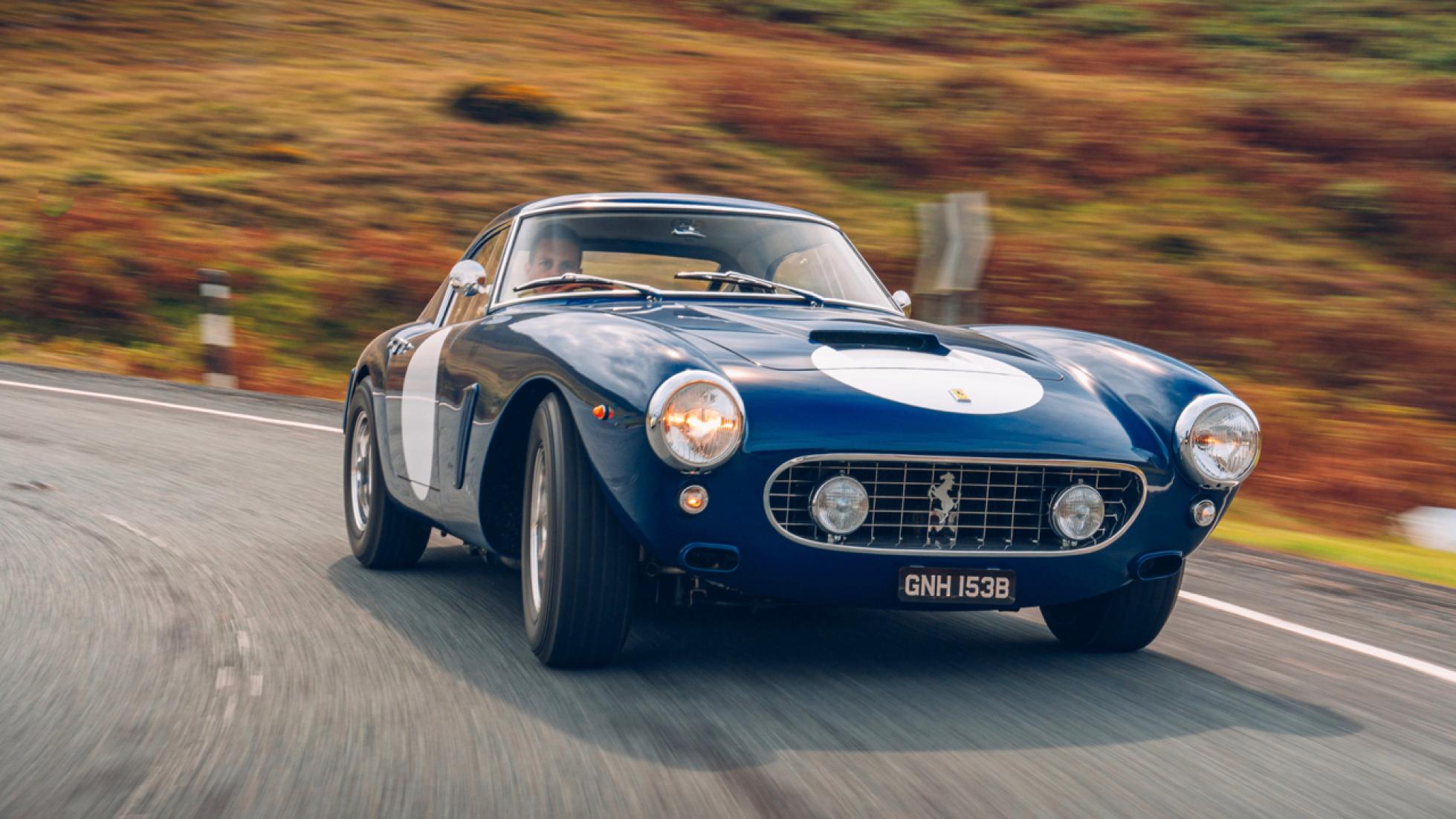
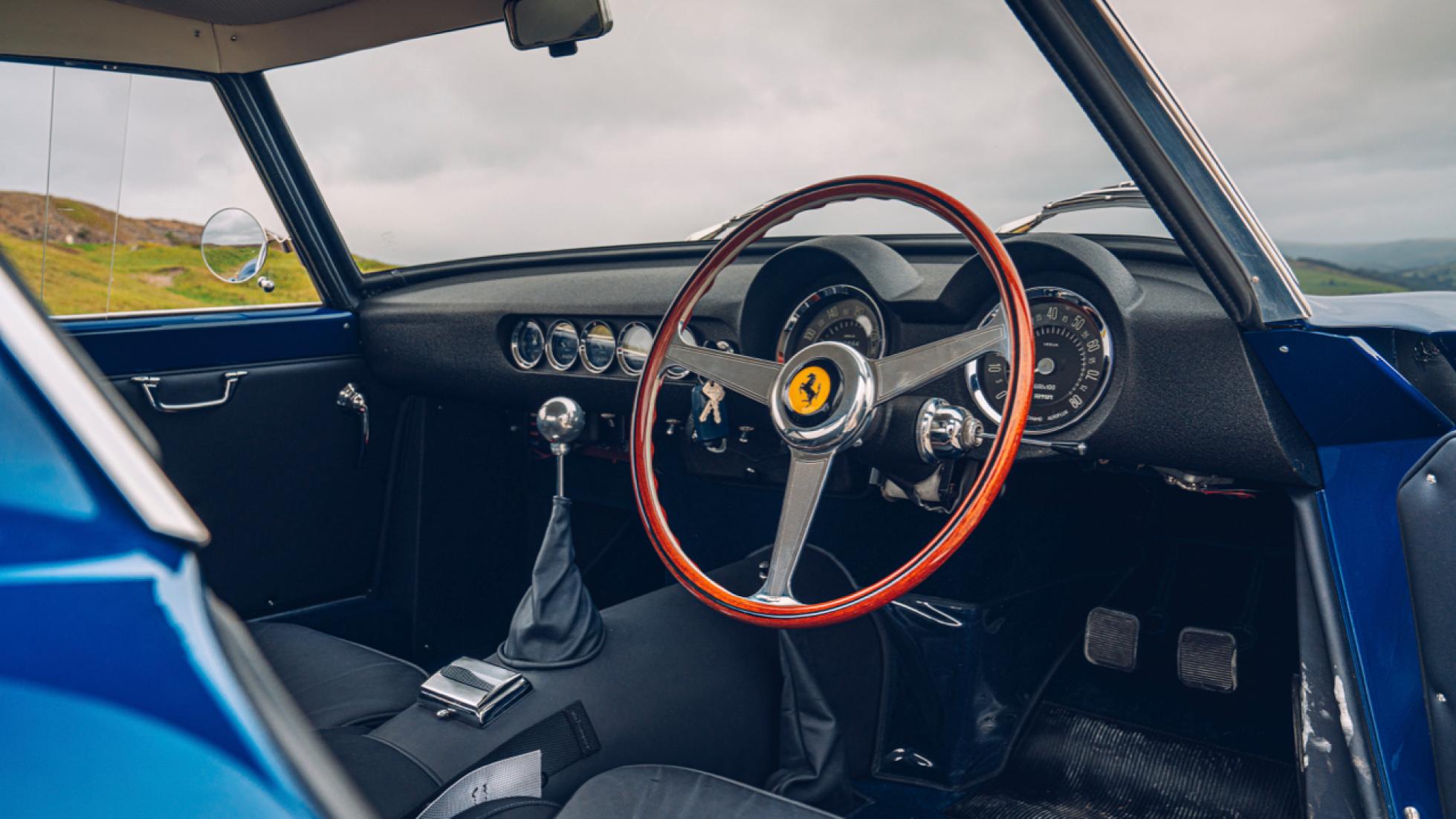
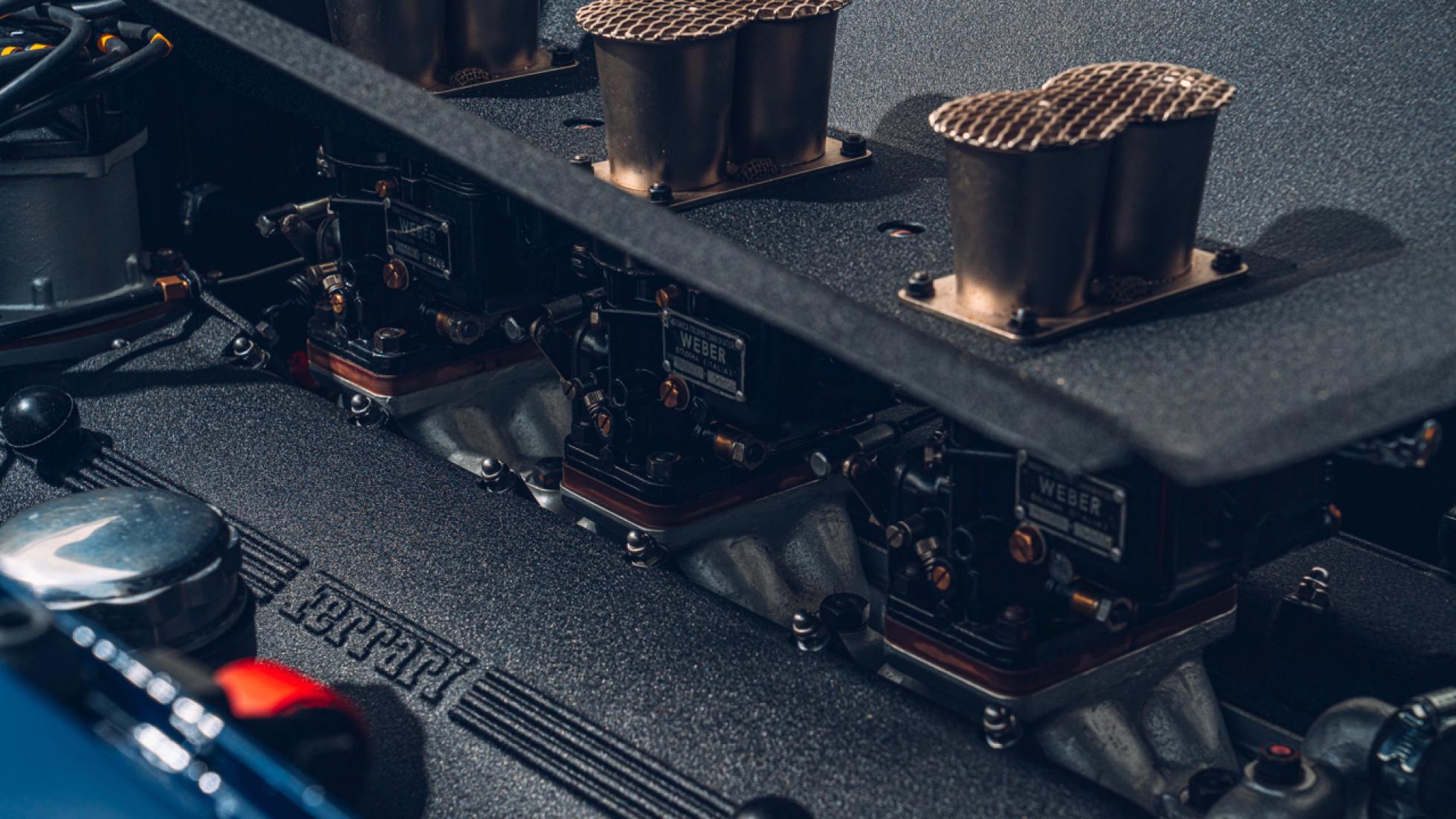
More’s the pity, but these two never went head-to-head in races 60 years ago. But don’t they just look like they could have done? Again, what a pair. Of course neither of these is an original.
Both are restorations. Eagle restores Jaguar E-Types to a glory they barely had back in their heyday, while GTO Engineering, off the back of decades of Ferrari restoration experience, can build you a 250 SWB almost from scratch. You need an original chassis plate, ideally from a period 250 or 330, and they do the rest.
The 250 is fabulously authentic. There is nothing about it that isn’t period correct, no nods to modernity or frivolous enhancements. It’s as near to a 250 SWB as you can get without having to pay £10 million for the privilege of owning one of the 176 originals.
One question possibly worth tackling at this stage: does a car so true to the original diminish the status of an actual original? GTO Engineering will charge you around £850,000. In comparison to an actual it’s priced like a knock-off Rolex, but it certainly doesn’t perform like one. I bet it’s indistinguishable. And if I owned an original, I’d probably be a bit put out that someone could have the same experience for a tenth of the price. And that many of the components were basically new and performed better.
It’s mimicry of the highest order and in a way very flattering. If Ferrari had done this themselves we’d accuse them of cashing in and diminishing the original, but a third party? Actually, I think the same outcomes stand, with the proviso that it’s hardly like GTO is going to be building dozens of ‘em, and at least they’re completely transparent about what they’re doing. But you know what I’d do if I owned a real 250? Have one of these as well, and not be worried about driving it.
Because it is a special, special thing to drive. You descend into this small cockpit, snug yourself in the round backed seat, discover what looked like a small car outside now feels considerably bigger when you’re sat this low behind a bicycle wheel-sized steering wheel and a long, tall gearlever topped by a metal sphere the rough size, weight and hardness of a snooker ball.
Now absorb the instrumentation perfection: two dials ahead, five across the centre, all of them containing engine information: revs, pressure, fuel, temperature. A lot of dials and not much else – some toggles under the dash, a handbrake you flick down the footwell and slender A-pillars either side of a curved windscreen.
Dominant dials and gearlever. They tell you what you need to know. It’s all about the engine. So you insert this tiny key, twist it through 180 degrees and then press it. If you weren’t already back on the start line of a 1960s GT race, you will be now.
Because out of this neat, beautiful, delicate car erupts a noise of monstrous intent and purpose. Outside it’s glorious, melodious. Inside it’s not far off a mechanical thrash of white noise. But your experience of this V12 (in this instance a larger capacity 3.5 with around 320bhp) isn’t just aural, but physical. You feel it: the buzz, the vibration, the sense of power and strain, the keenness and effort.
And in a moment your whole expectation of the car changes. All the visual clues pointed to something deft and dainty to drive. But now? All thoughts of you dominating the car evaporate. It’s worth pointing out that GTO Engineering has built this particular car to a racy spec with little sound deadening. But then you snick first and confidence builds.
That long, strong pole slots home perfectly once you’ve put some muscle into it, the clutch engages beautifully and off you go, up and over the Welsh hillsides thinking ‘maybe there’s nothing to fear here’. And there really isn’t. The gearbox is such a friendly handshake that the Columbo V12 just opens up for you – you don’t mind using high revs when you know a sweet shift awaits you at the other end. An end that’s up past 7,000rpm. Heck of a racket inside, but if you want a car that feels alive around you, that is dominated by its engine at the expense of its chassis… well here it is.
We hear time and again Enzo’s probably apochryphal quotes: “aerodynamics are for people who can’t build engines”, “I don’t sell cars. I sell engines. The car I throw in for free.” It doesn’t matter if he said them or not, because here’s the evidence. It’s not that the chassis is sub-standard or the handling concerning in any way, just that the engine rules the roost. You don’t need many revs – it pulls surprisingly cleanly at the bottom end in fact – but from 3,000rpm on is where you want to be. The crisp engine note bites into you, roaring through the mid-range before a crescendo in the upper reaches.
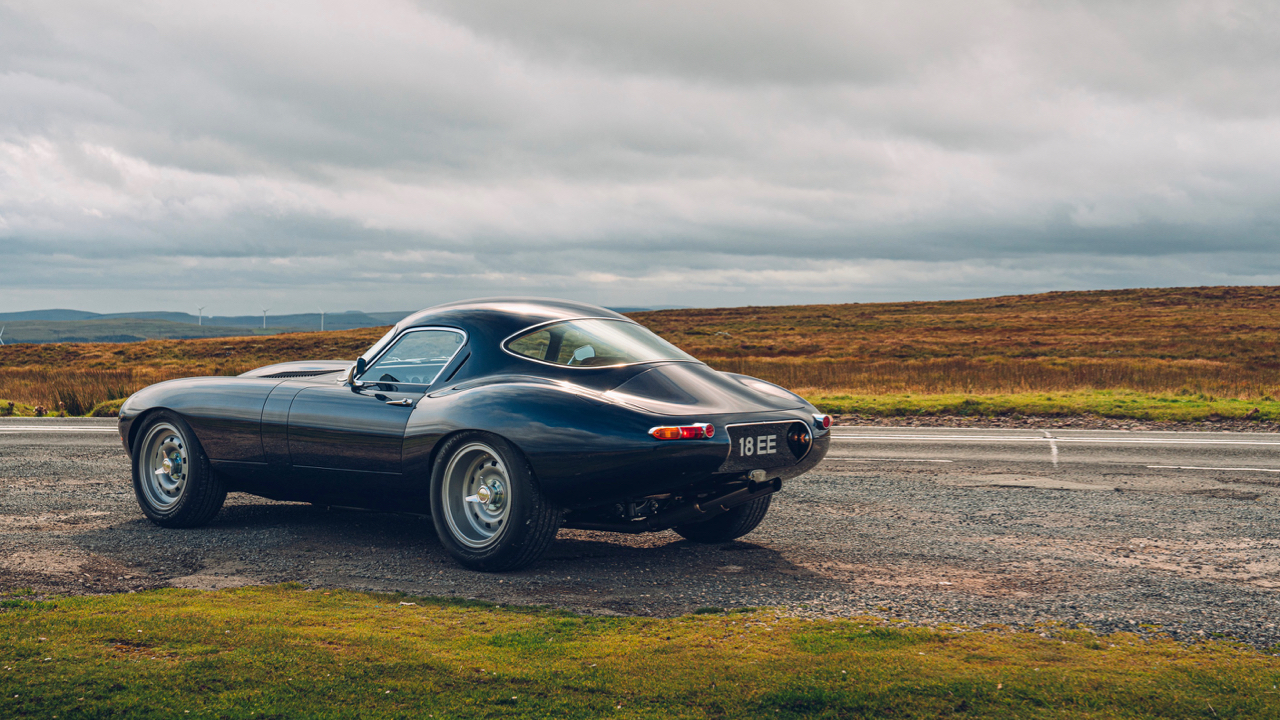
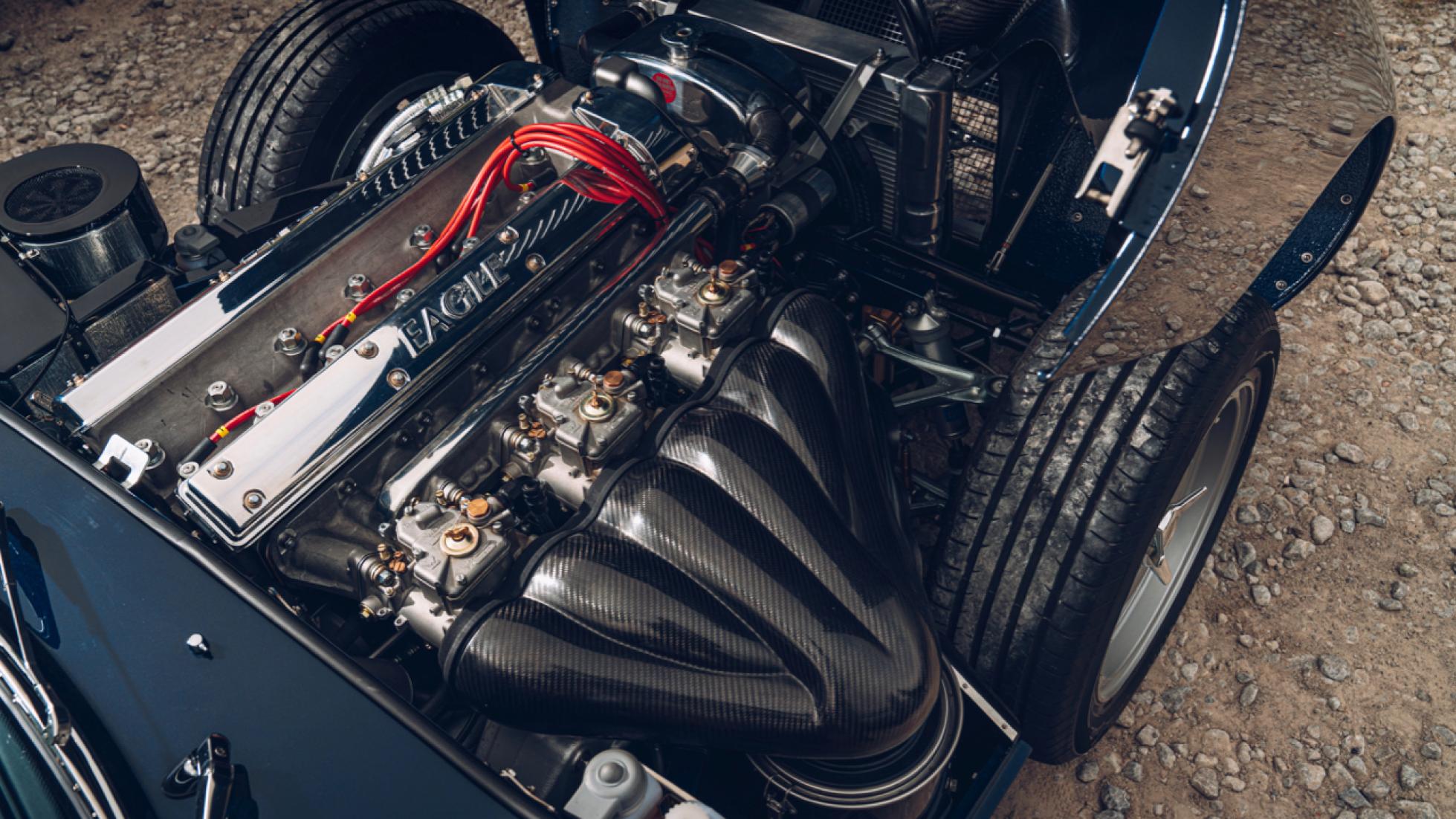
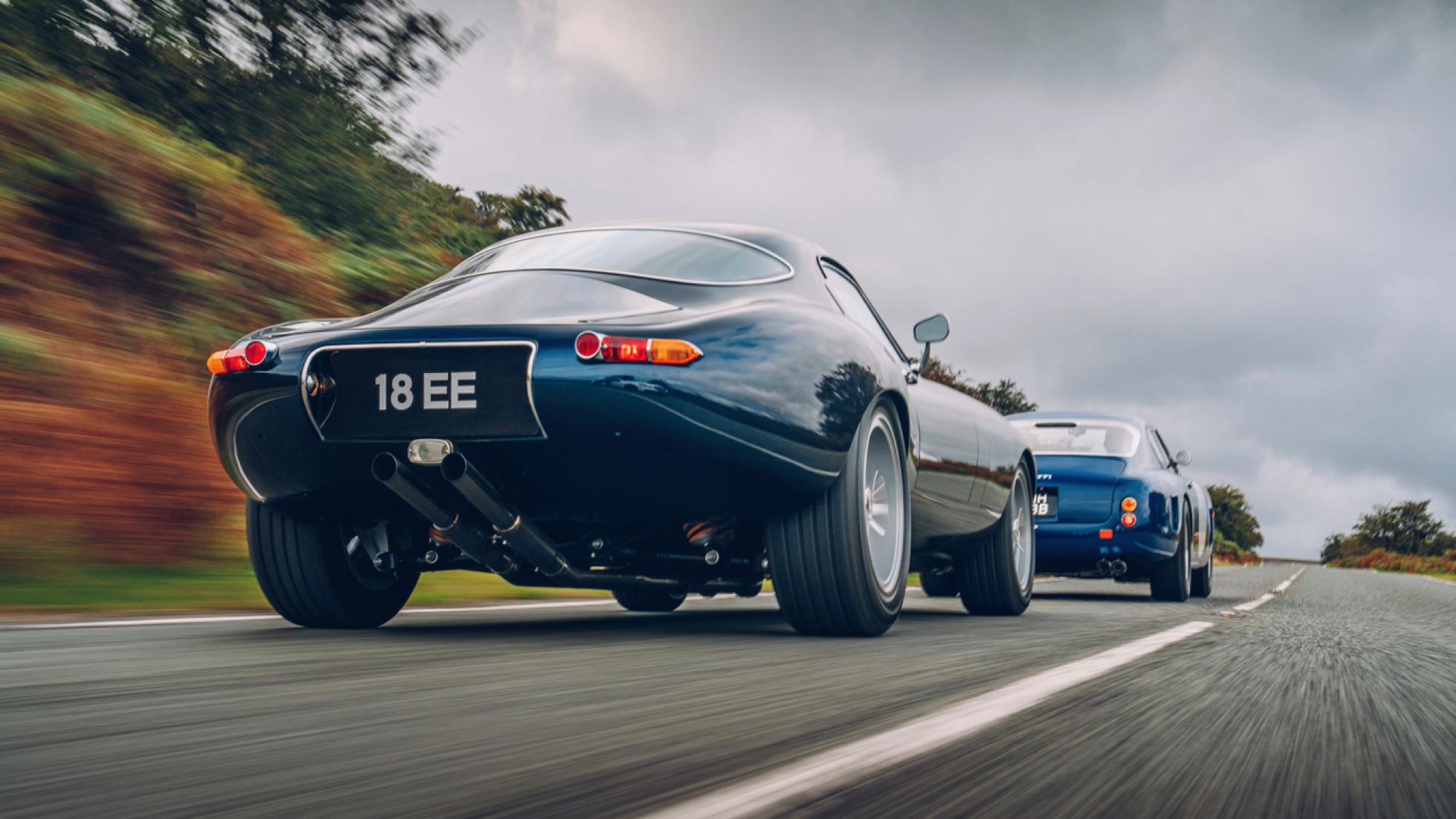
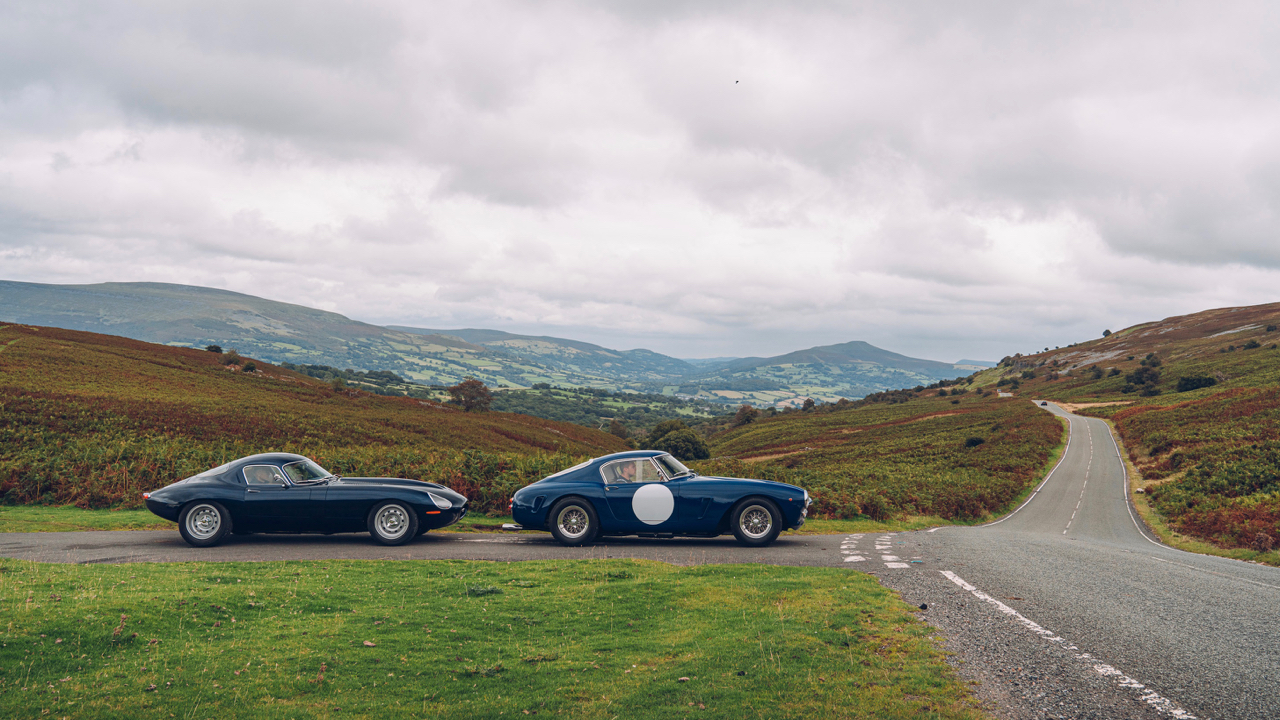
Speed? More than enough for the brakes to cope with, thank you very much. The driving experience, as you might have gathered, is period correct. You have to turn it in very deliberately, there’s slack if the steering is straight, plenty of weight if it isn’t. It’s not as reactive to the steering as the quicker-witted Eagle, doesn’t respond as eagerly to inputs. Instead you guide it along, uncorking the engine when you can, but enjoying the richness of the experience, letting your imagination cart you back 60 years.
So what of the Low Drag? It’s the most complex E-Type Eagle does, the bodywork alone the result of 2,500 hours work and many individual pieces of aluminium invisibly joined to create one divine whole. Open the tiny door – see how the leather glows with inner radiance – and start to fold yourself in.
One foot first, then backside, not forgetting to hunch your shoulders and drop your head. It’s alright, there’s room to uncurl once you’re in. And there really is beneath the vaulted ceiling and chairs that Eagle has considerately moved further back in the chassis. And then you take in the view down that endless bonnet and realise that you still get to appreciate the reflections you noticed earlier, just in a different panel.
Like the 250 there’s a similar array of dials and toggles, just not quite so stark in their layout. Some attempt at design has been made here, the instruments gathered at the top of an upswept centre console. But over this you have an awareness that no Jaguar E-Type ever left Browns Lane looking or feeling remotely as good as this. It’s hard to put your finger on any one thing that stands out, because the secret to Eagle’s success is that nothing has been overlooked, every component has received the exact same consideration and enhancement.
And here’s where Eagle’s philosophy deviates from GTO’s. The Low Drag is emphatically still an E-Type, but it’s more artful, a little interpretation is applied to the restoration. And to the way it drives. The chassis is stiffer than it once was, the suspension more rigidly attached, most slack and waywardness purged. As a result it feels almost modern to drive.
No, better than modern. Because modern tends to mean speed and capability, a certain ruthlessness demanded as a result of having to keep the power under control. There’s servo assistance on the brakes here, but not even power assistance for the steering, let alone any electrical control systems.
But neither this nor the Ferrari are about exploring the limits – you don’t get more out of them by going faster. That’s not how they work. Instead you savour the sensations, listen to them, feel them – it’s the richness and tactility of the experience that counts, that makes you almost giddy with excitement.
This Low Drag is highly specced, using the uprated 4.7-litre engine with a big valve, wide angle head for 380bhp and 508Nm. Behind that the exoticism of a magnesium five-speed gearbox and magnesium rear differential. All up, it only weighs a little over a tonne. So it’s rapid, but as I said, that’s not what it’s about. Sure, you’ll use all the revs, but only to hear more of the addictive baritone rasp.
You feel it: the buzz, the vibration, the sense of power and strain, the keenness and effort
Even so, there’s not many revs available here – the redline sits at 5,000rpm – but you don’t feel short-changed because of the robust torque. The Ferrari is more highly strung, needs to come on cam, while the Eagle just gulps in air through triple Webers, digs its heels in and thrusts.
It’s the tauter of the two to drive and that makes it more exploitable and trustworthy on modern roads. The steering is more accurate (perhaps too sudden just off centre), the damping supports the car better, it does as you ask without delay, and does it beautifully. And it really does. The Low Drag flits gracefully over the roads of south Wales, kickback is there, but always rounded off, the ride firm, communicative, but not jarring or tiring. You know you could go faster, and the car would be up for it, but equally you’re both happy just savouring the event.
But as is the case with both GTO Engineering and Eagle, how you want them to feel is all a matter of specification and tuning. You don’t buy one of these off the shelf. Oh no, when you’re paying this much and the build numbers are so low (a literal handful a year from each company), you go in and discuss how you’ll be using it, where you drive it, and they tailor the car to you. Diffs, dampers, engines – it’s a degree above what any modern hypercar offers. Sure, Ferrari or McLaren will tailor seat fit and indulge your wildest paint and trim fantasies, but set-up the whole car just for you? No.
The Jaguar E-Type has never floated my boat. I find it hard to put a finger on why that is – is the bonnet too low and long? The roof too high? The wheels set too far in? Does Jaguar just not resonate with me? Was the E-Type’s groovy London heyday all rather tenuous and shallow? Certainly original E-Types I’ve driven have been take-it-or-leave-it experiences. But this? I find myself desiring an Eagle Low Drag or Lightweight GT more than almost anything else on the planet.
Of the two, it’s the one that charmed me more. But boy would I ever prefer to drive the 250 SWB to absolutely any modern hypercar. It’s just so special, so intoxicating and above all so refreshing to drive an exotic car that doesn’t need to be driven fast to feel alive and awesomely exciting.
These two remind us of what driving is all about, how just operating a car and driving it considerately can be so pleasing, that stunning mechanical engineering is what we all admire and appreciate. I don’t struggle to see the value in either of these, because the craftsmanship is so obvious, the quality so deep. Pure escapism. And isn’t that what we all fell in love with about the car in the first place?
STORY Ollie Marriage






